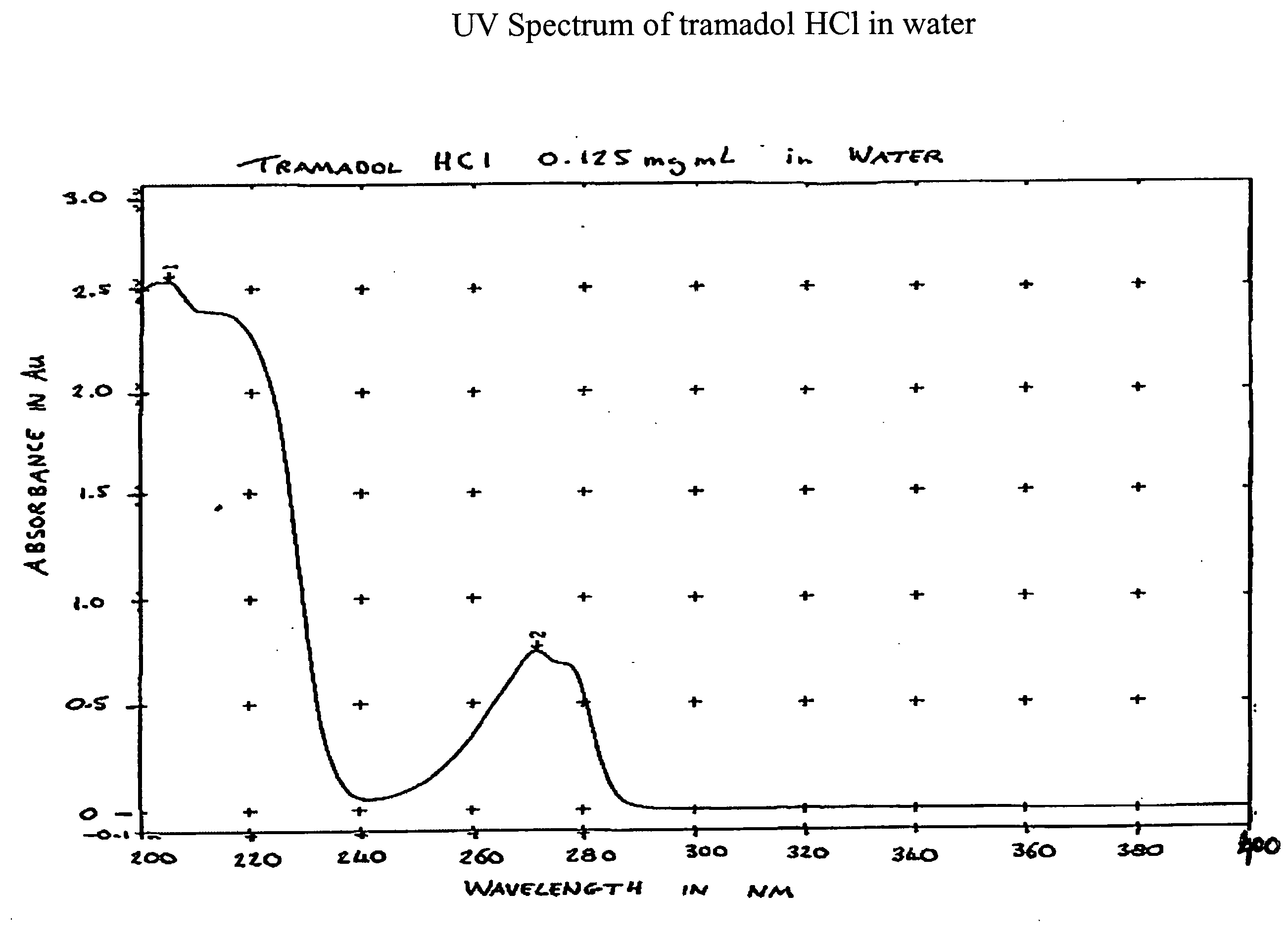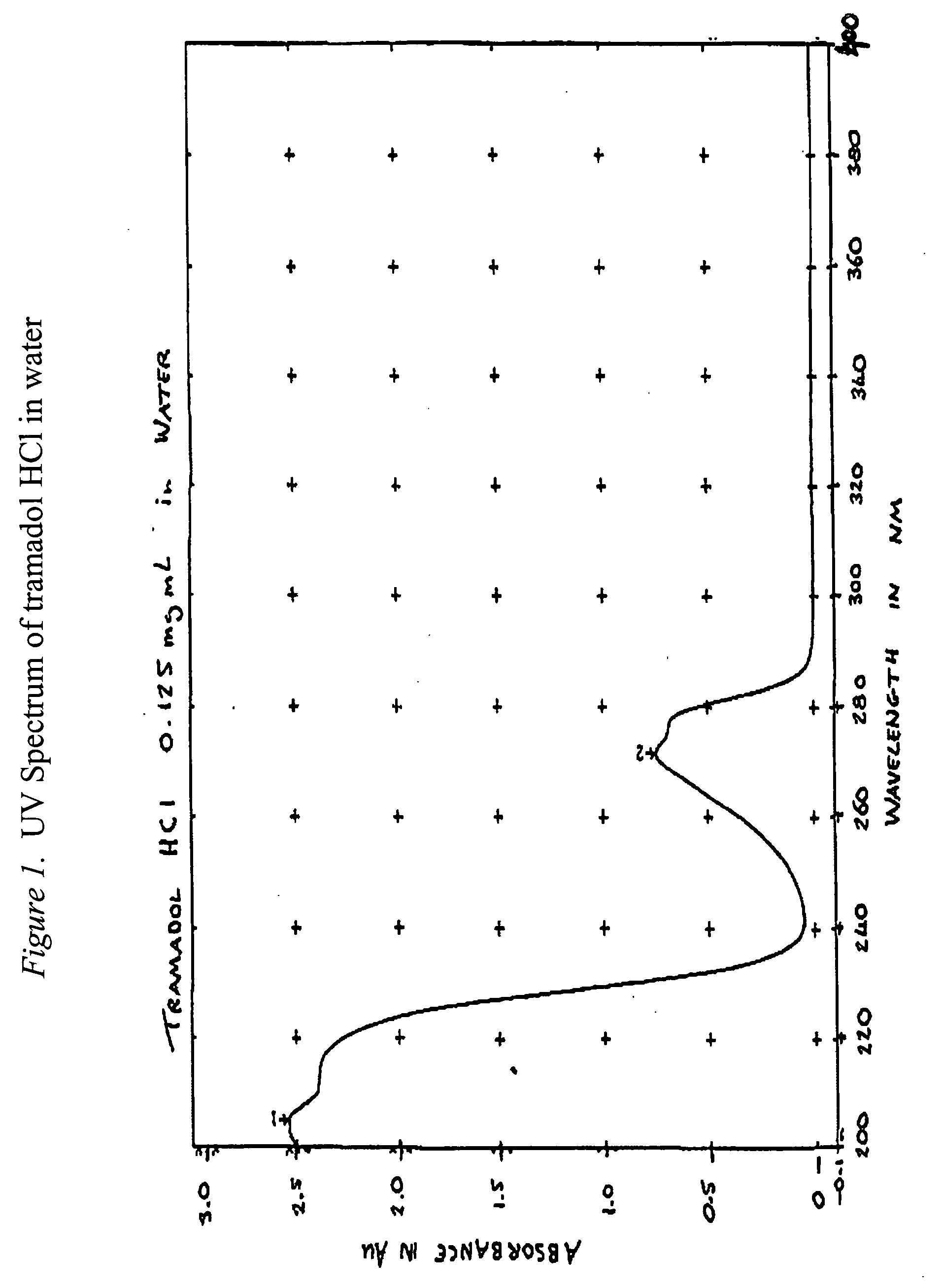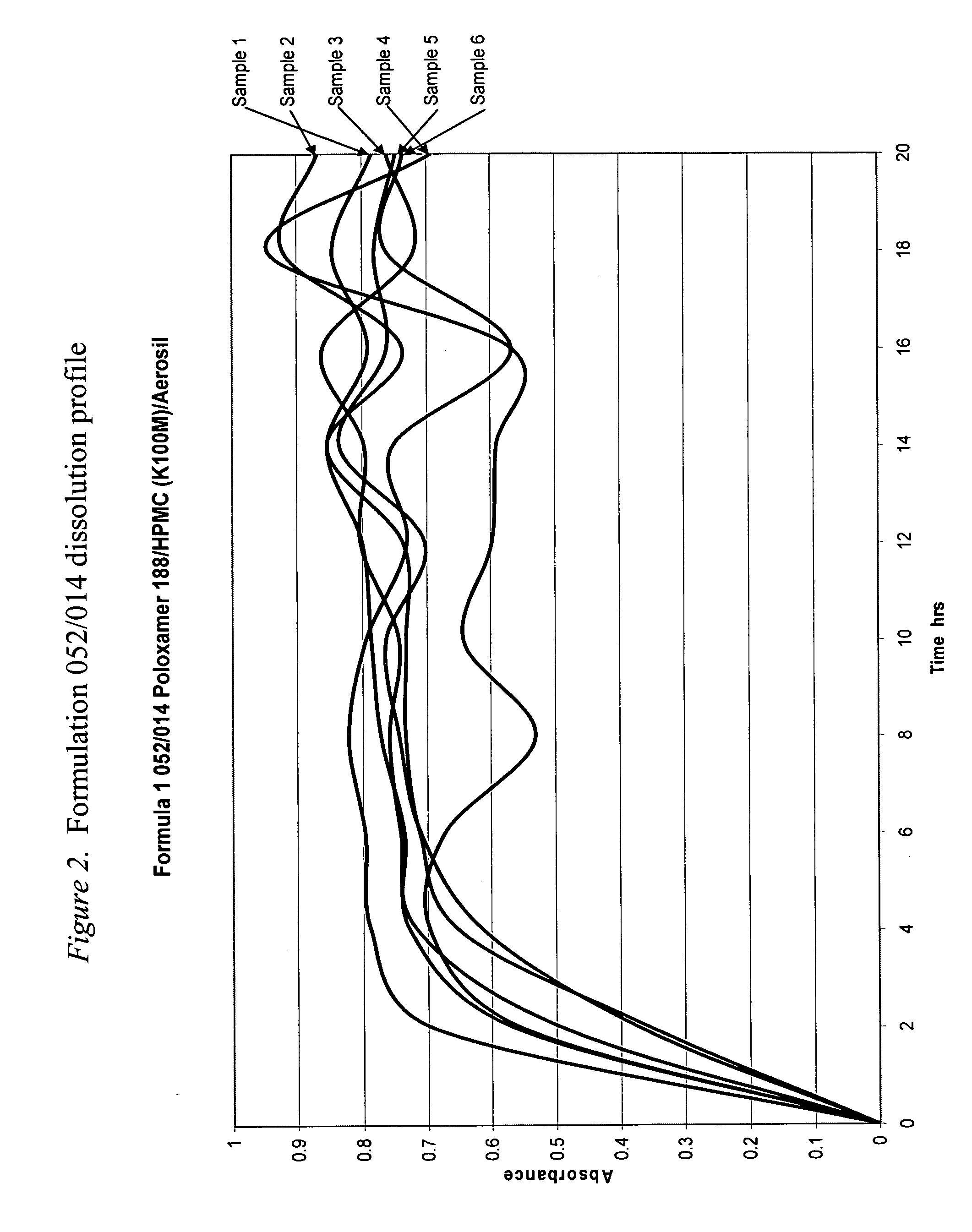Methods of preventing the serotonin syndrome and compositions for use thereof
a serotonin and syndrome technology, applied in the field of pharmaceutical compositions, can solve the problems of no methods in the literature directed at the development or use of pharmaceutical formulations, and achieve the effects of reducing the incidence and severity preventing or reducing the incidence and intensity of the serotonin syndrome, and high efficiency
- Summary
- Abstract
- Description
- Claims
- Application Information
AI Technical Summary
Benefits of technology
Problems solved by technology
Method used
Image
Examples
example 1
Binary Mix Compatibility Trials
[0461]Binary mixes were prepared of tramadol HCL in potential excipients (in some instances a third material, fractionated coconut oil was used to bring two non melting materials into intimate contact). The mixes were stored in sealed amber glass bottles under conditions of 40° C. / 75% RH for four weeks then examined by HPLC for signs of interaction or degradation. Excipients were chosen from materials considered to potentially cover the range of material properties that were likely to be required by this project. Materials were chosen for properties such as dissolution rate i.e. from materials that are relatively soluble in aqueous media to totally insoluble materials; their potential as viscosity / release rate modifiers, including such materials as different HPMC (viscosity) grades and Aerosils for contributing thixotropic properties. Mixes containing 25% w / w tramadol HCL were prepared for each excipient. Samples were prepared by mixing tramadol HCl wi...
example 2
Dissolution Testing of a Modified Gelucire 50 / 02 Formulation
[0471]Methocel K100M, a very high viscosity HPMC, was substituted for Pharmacoat 606, a very low viscosity HPMC, to investigate whether this substitution using a much higher viscosity HPMC would significantly slow the release rate of tramadol HCl from the formulation. The active and reference placebo capsules' formulations are shown in FIG. 4. It should be noted that the relative viscosity of HPMC is based on the viscosity of a 2% aqueous solution at 20° C. measured in mPas (millipascal Seconds). The numbers and letters in the HPMC's designation indicate (different manufacturers use slightly different conventions) the HPMC's 2% viscosity in mPas (1 mPas=1 centipoise (cps)), e.g. Pharmacoat 606 (Pharmacoat 6 is the HPMC type with the final 6 referring to the 2% viscosity) has a viscosity of 6 mPas (6 centipoise) as a 2% solution while Methocel K100M (Methocel K is the HPMC type and 100M is the 2% viscosity using the letter M...
example 3
Dissolution Testing of Tramadol HCl in Gelucire 50 / 02 without Additional Excipients
[0473]Initial dissolution trials on formulations were performed as ‘sighting’ trials to give some idea of the range of profiles possible for 75 mg of tramadol HCl in a matrix made up to 400 mg. The two major excipients used, poloxamer 188 and Gelucire 50 / 02 are at opposite ends of the water solubility / dispersibility scale so would give a good indication of the range of release rates potentially available. Poloxamer 188 is readily water soluble while Gelucire 50 / 02 is highly lipophilic and only very slowly dispersible in water. The Gelucire 50 / 02 formulation 052 / 019 dissolution release rate, shown in FIG. 5, is close to that desired for this project. This formulation does incorporate materials which would modify (increase) the release rate so samples were prepared containing only tramadol HCl and Gelucire 50 / 02 to determine the slowest release rate that could be achieved with Gelucire 50 / 02. Samples we...
PUM
 Login to View More
Login to View More Abstract
Description
Claims
Application Information
 Login to View More
Login to View More - R&D
- Intellectual Property
- Life Sciences
- Materials
- Tech Scout
- Unparalleled Data Quality
- Higher Quality Content
- 60% Fewer Hallucinations
Browse by: Latest US Patents, China's latest patents, Technical Efficacy Thesaurus, Application Domain, Technology Topic, Popular Technical Reports.
© 2025 PatSnap. All rights reserved.Legal|Privacy policy|Modern Slavery Act Transparency Statement|Sitemap|About US| Contact US: help@patsnap.com



